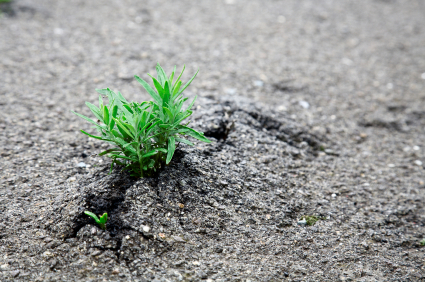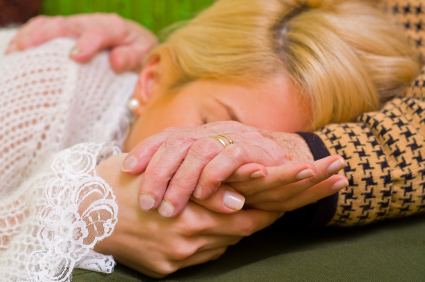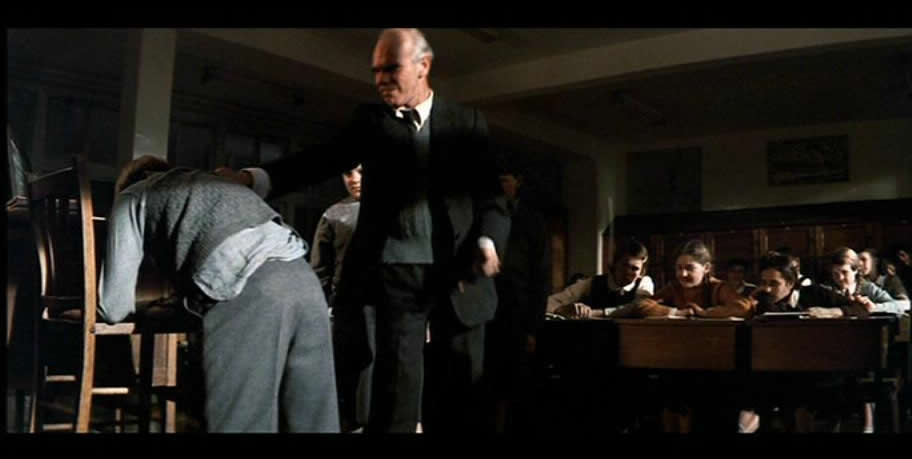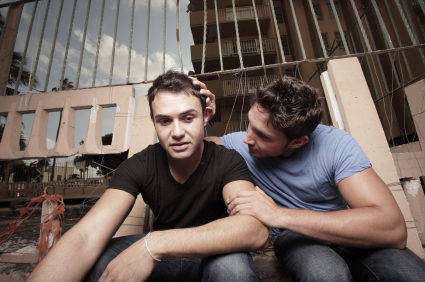sharing the journey of Relationship, Embodiment, and Awakened Living
sharing the journey of Relationship, Embodiment, and Awakened Living

For one human being to love another; that is perhaps the most difficult of all our tasks,
the ultimate, the last test and proof, the work for which all other work is but preparation.
Rilke
Our society is in the midst of a major transition. As we move out of a culture of individualism and competition, we are beginning to acknowledge the pain of disconnection. People are realizing that we need deep healing. The need is so great, and the pain so deep, that centers designed to meet it must be widespread yet sacred. These are the healing temples.
A healing temple is a place for coming to wholeness, a spa/church/hospice-like atmosphere of peace and radical acceptance. It is staffed by people capable of allowing and supporting people's process and of helping them to come back to their present experience, to their feelings and needs, to their bodies.
A healing temple is more commonly known as a peer support center (see other examples here). It is a kind of free clinic or "community-based mental health care," much like a donation-based yoga center. It is staffed by trained peer support specialists we call sacred intimates. They offer what we call emotional first aid.
Just like gas stations are an essential part of an industrial culture, healing temples will be an essential part of a regenerative one. Staff at healing temples are hospice workers for the passing of the dominator culture and midwives for the emerging culture of mutual support.
There is no great difference in the reality of one country or another, because it is always people you meet everywhere. They may look different or be dressed differently, or may have a different education or position. But they are all the same. They are all people to be loved. They are all hungry for love.
The healing temple is a place for empathy, where people are cradled with a love that says I believe in you and support you, just as you are. In a space of love, people’s process, their true beauty, like a flower given light and water, naturally unfolds.
The healing temple is what psychologists call a "holding environment," a place where we hold space for each other and where we are held, quite literally. While expressly nonsexual, it will include nourishing touch, just like a mother holds, strokes, and comforts her child. When we are deeply present to ourselves and each other, both recent wounds and old scars of separation are able to heal.

The healing temple, as a peer support center, is a place for people to activate and express their own healing energy. Each person who enters is asked to come with the intention of being a healing presence for others and themselves.
The healing temple space communicates peace, relaxation, and community. It will serve different functions at different times. There will be 1:1 spaces, small group spaces, and large gathering spaces, indoors and out. We envision a healing temple in our community as a place one can go anytime to find solace in a quiet, beautiful space, as well as nourishing touch or empathy if desired. We don’t see it so much as a place for group ritual or other large events, nor as a social gathering place. There are other venues for that.
The healing temple is just one expression of a regenerative culture; it is not meant to be all things to all people. But other healing temples may differ. While we see a need in our community for a place for quieter connection, other communities may want a space for more dynamic activities such as ecstatic dance. Each healing temple will reflect the needs and desires of the community that forms it.
Regardless of what’s going at the healing temple at any given time, it is a place one can go and be in a soothing environment, among healing activities, with no need to interact. Ideally it would be open around the clock. Starting out, we see ours operating for three to four hours one evening a month, then one night a week, in someone’s home. Ultimately, it will be its own dedicated space, with gardens, flowers, flowing water, beautiful food, and people feeding each other. But above all, the healing temple is a space made primarily in people’s hearts, in the attitude they bring to it.1
they bring to it.1
The healing temple is a refuge, a place of retreat where people feel comfortable and safe. Like a high-end, all expense paid resort, it is a place to relax, to not have to do anything. A place you can go anytime to find physical, bodily connection: hugging, caressing, cuddling, and sleeping together– literally.
The healing in temples of antiquity included sexuality. This is certainly a crucial aspect of our healing. The reason for excluding sexual activity from the temple space today is not to avoid legal issues, but to create a safe-feeling space for a greater number of people. Unfortunately, we are just too wounded in our culture to be able to successfully integrate sexuality into a temple space. Fortunately, most of the healing we need is not in fact, sexual…

There's been a war going on within us between our sexual selves, our physical bodies, and our spirituality. To recognize that we are
both spiritual beings and sexual beings and to embrace both of these
allows us to redirect the energy that's been going into that conflict,
that internal struggle, and instead expand outward and embrace all of
creation as a whole, as one.
The healing temple is a place for the integration of body, heart, and spirit. Our culture has “body places” like gyms, dance halls, and hospitals. We have spirit places like churches, synagogues, and zen centers. We don’t have heart places as cultural institutions, but we do have them on a smaller scale, such as support groups, recovery centers, and counseling facilities. The healing temple is a place for all three, where we heal the unfortunate split in our culture between body, heart, and spirit.
Our culture itself has a split personality: we both denigrate and obsess over the body. There’s a deep thread in our religions of being anti-body, so people have a lot of shame around their physical and especially their sexual needs. In recent decades there has been a backlash– an overreaction, in fact– to this denial of the body and it needs. This has led to an excessive selfishness in the pursuit of personal satisfaction. But that only feeds into the individualism that divides us.
Ken Wilbur calls Christianity an ascending religion and paganism a descending one. Neither is good or bad, but one can lead to asceticism and the other to hedonism. Taken to either extreme, neither has much heart. Thus, the Buddha (as recounted in Hesse’s Siddhartha) rejected both.
The power of the healing temple approach is that we are blending both body and spirit in heartful integration. To speak in energetic terms (as described by Warren Grossman in Healed by the Earth): the crown chakra takes in energy from the sky, the feet and root chakra take in energy from the earth, and one expresses this energy out through one’s heart. The hexagram, with its interpenetrating “masculine” and “feminine” triangles, is sometimes used to symbolize this.
In the healing temple, we cultivate sensual pleasure. Through color, beauty, breath, touch, sound, and movement, we honor our animal selves. But we contain and guide this energy with the heart.
 The greatest source of sensual pleasure for many is of course sexuality. Sexuality is a profound blessing and awe-inspiring mystery, developed over billions of years of evolution. It links us with all other living beings on the planet. It is second only to the survival instinct as the most powerful force in the human experience. When used wisely, it can help heal most physical and emotional difficulties. It can drive us to noble and creative endeavors, as well as to destructive and hurtful pursuits. It is in large part because of sexuality’s immense power and frequent misuse that our culture has so much fear and shame around it.
The greatest source of sensual pleasure for many is of course sexuality. Sexuality is a profound blessing and awe-inspiring mystery, developed over billions of years of evolution. It links us with all other living beings on the planet. It is second only to the survival instinct as the most powerful force in the human experience. When used wisely, it can help heal most physical and emotional difficulties. It can drive us to noble and creative endeavors, as well as to destructive and hurtful pursuits. It is in large part because of sexuality’s immense power and frequent misuse that our culture has so much fear and shame around it.
Sexuality is most healing and transformative when it is held within a container of strong heart energy, which is in turn nestled within a strong spiritual container. It is because we are so starved for physical contact that we must access and guide this energy with the heart. And what guides our heart? The overall spiritual purpose of our lives. Sacred Sexuality is the art and practice of cultivating and expressing one’s sexual energy for the highest good of oneself and all of life. When all three are combined: sex, heart, and spirit, we can live a deeply satisfying life of service to our ultimate vision.
The self-destructive patterns in our culture, including homicide, suicide, war, and addiction, all largely stem from the experience of physical and emotional starvation and the hatred of our bodies that is both the cause and result of it. The healing temple is a “PTSD treatment center” or “refugee camp” for a culture that’s been at war with the body for at least five thousand years. These centers can heal our violent world with compassion. Here’s how:

The Wall (Pink Floyd, 1982)
Most of us are too busy just keeping afloat, not only financially but emotionally, to give much loving attention to others. If you’ve hit your finger with a hammer, it’s difficult to care much about your spouse’s headache. What’s more, most of us in this culture have adopted many layers of emotional armor, and numbed out beneath it, in order to survive the traumatic abuse in our culture. One in four women in the U.S. is sexually abused by the age of 18. One in six men experience the same.2 In 2003, suicide was the third leading cause of death among people age 15 to 24; at least 20% of youth had considered it.3 The suicide rate among youth has since risen by 10%.4
Growing up shell-shocked, we have plenty of reason to shut down. If we’re lucky, we find ways to wake back up to life. As people come home to their bodies and learn to honor their touch and comfort needs, as they relax into having their physical needs met, this increases their ability to feel their bodies, their energy flow. In other words, they can once again feel their feelings.
No longer preoccupied with their own unmet needs, people can begin to feel other people’s energies, their feelings. This “heart energy” creates natural connection. With this connection, we naturally want what’s best for ourselves and others. This is compassion, and it is the foundation for ethics, morals, right action, and the end of violence.
To even approach the body, heart, or spirit, one must first get out of one’s head. In our culture, most of our conscious attention goes to our thoughts. Consequently, people are not very in touch with their own bodies and feelings, not to mention the bodies and feelings of others. We’re not really connecting, so we’re desperate for connection. This is why having sexual activity in a healing temple could be so problematic. People are likely to be too agitated and hence disruptive, too needy and hence depleting other’s energy, and too armored to sense how their energy is affecting others (by talking too much, hitting on others, etc).
This is because when we’re thinking, we’re not really living. The more we can stick to experiencing ourselves and others, not just our thoughts and judgments about them, the more we can not only enjoy life but at the same time, “do the right thing.” No longer shadow-boxing with life, we meet it head on. Our thoughts become more accurate; our actions more appropriate. “The mind creates the abyss; the heart crosses it” (Sri Nisargadatta).
A healing temple is built on honesty. You are free to ask someone to cuddle with you, and that person is free to say no. Clearly this honesty can be painful at times. But these are growing pains, reality checks that bring us into greater harmony with others. “Then all which previously kept us isolated in mind– our doubt and anger and fear acting like watchdogs that warned of the threatening approach of others [and the threat of approaching others]– become reminders of the painfulness of not loving, and become a means of opening to rather than withdrawing from life.”5
The degree to which disruptive behaviors would be a problem depends on the strength and quality of the container created by the staff. Some of us, firmly grounded in the present, can handle these challenges and have an immediate calming effect on people. Most of us, however, are deeply wounded, easily drawn into drama, and a healing temple would do well to at first be selective.
At first, we will welcome participants by invitation only. After establishing an initial staff, we plan to invite everyone on the our email list, which includes anyone who has inquired. We are comfortable assuming that this would be “self-selective” enough. If someone wants to bring a friend, this will be considered by request.
I have never met a person whose greatest need was anything other than real, unconditional love. You can find it in a simple act of kindness toward someone who needs help. There is no mistaking love. You feel it in your heart. It is the common fiber of life, the flame that heals our soul, energizes our spirit and supplies passion to our lives. It is our connection to God and to each other.
Establishing healthy patterns of relating is of fundamental importance. At the root of our loneliness, of all our personal anguish and cultural dysfunction, is the idea that we are separate from everything and everyone else. Love is central to our well-being because the foundation of personal and cultural healing is a sense of unity. This is why many of us long to connect not only to someone else, but to something greater than ourselves. By giving people a chance to share intimacy, to develop trust, and to help others, the healing temple offers opportunities to help to transform a basic sense of isolation into a feeling of oneness.
 As recent research shows, we are not born knowing how to love.6 Many of us never learn. We struggle with relationships, craving closeness yet fearing the pain it always seems to bring. “Security means nobody entering our cage… Nobody is rattling our bars.”7
As recent research shows, we are not born knowing how to love.6 Many of us never learn. We struggle with relationships, craving closeness yet fearing the pain it always seems to bring. “Security means nobody entering our cage… Nobody is rattling our bars.”7
Much of our difficulty with relationships comes precisely from this very ambivalence. In other words, we don’t trust others, so we can’t build a solid relationship with them. A vicious cycle continues and deepens.
"Healthy attachment" is the way people naturally know, unconsciously, that they are not alone in the world and they can turn to others for support. Whether we trust or don't trust other people is something that is established in the first three years of life, long before we talk or even "think." In other words, our patterns of relating are set in infancy, before language, and are lodged in the right brain, which is nonverbal. This is why a basic sense of isolation cannot be addressed merely conceptually. How often do people gain as much from a long talk as they do from a simple hug?
Fortunately, we can learn to love at any age. Trust in others is built through basic interactions, like looking into another’s eyes and then looking away. These simple exercises are normally shared between mother and baby but can be practiced by adults as well. And what do we learn from such infantile exercises? That we deserve loving attention, that it’s OK to experience separation (when one or the other turns away), and many other subtle but profound life-long lessons. These exercises could be considered “tantric,” but all we are doing is retraining how we connect with others on the most basic level. We learn that it’s OK to sometimes be alone, and ultimately, that we are never really alone.
Fishes, asking what water was, went to a wise fish. He told them that it was all around them, yet they still thought they were thirsty.
Healing temples support committed relationships. We have many needs in relationships, and we can’t expect to have them all met by one person. People are not superstores.
 The three most compelling needs that are often met by romantic relationships are emotional intimacy, nourishing touch, and genital sexuality. Learning to cultivate intimacy and touch in many relationships, with friends and family as well as lovers, helps to create a base of nourishment from which to draw. When our thirst for connection– for emotional support and loving physical contact– can be slaked by many different people, we’re more likely to have the resources to make wise decisions about sex and romance and less likely to place unmeetable expectations on our partners.
The three most compelling needs that are often met by romantic relationships are emotional intimacy, nourishing touch, and genital sexuality. Learning to cultivate intimacy and touch in many relationships, with friends and family as well as lovers, helps to create a base of nourishment from which to draw. When our thirst for connection– for emotional support and loving physical contact– can be slaked by many different people, we’re more likely to have the resources to make wise decisions about sex and romance and less likely to place unmeetable expectations on our partners.
Also, sacred sexuality is built on self-love. It is impossible to love another human being more than you love your self. The healing temple helps people to love themselves, which helps them to love others.
The Asheville Healing Temple will be staffed by volunteers who have completed The REAL Center's REALationship curriculum (Levels 1-4) and our year-long Immersion Program (a total of about 120 hours). We currently have a couple dozen graduates of the program, with several interested in being involved. Individuals with comparable skills or experience may be considered. If you'd like to be involved or would like to build a healing temple in your area, please contact us.
2 Statistics Surrounding Child Sexual Abuse, Darkness to Light, 2008
3 “Hardwired to Connect,” The Commission on Children at Risk, 2003
4 CDC, as cited in “Teen Suicide,” Dr. Richard O’Connor, 2007
5 Stephen Levine, Who Dies?
6 Susan Kuchinskas, The Chemistry of Connection, 2009
7 Levine, Who Dies?